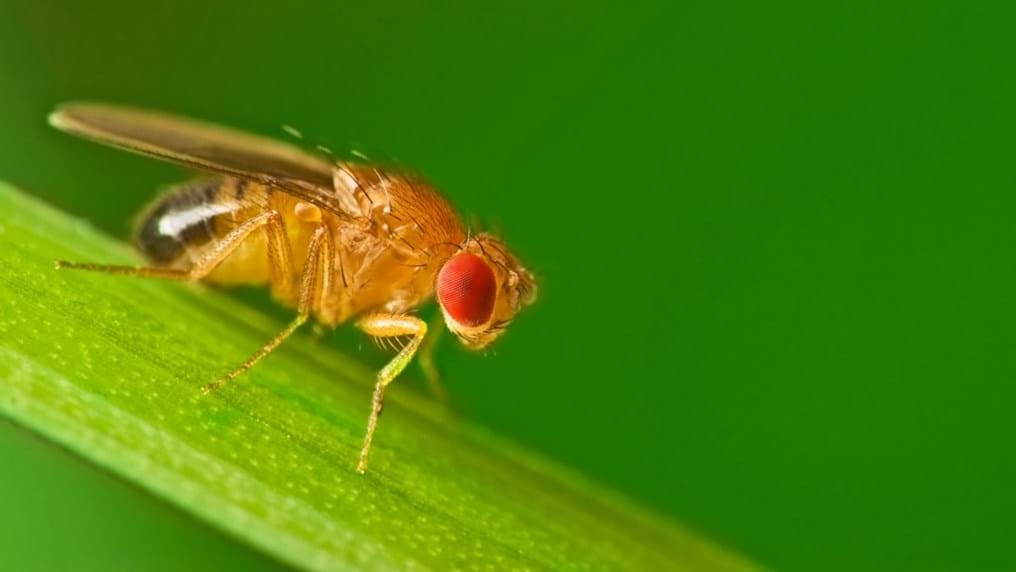Day 165: Fruit flies, canaries, wine and chemical hazards

8th November 2014
Author: Geoff Maitland, IChemE President 2014–2015.
The science of smells and odours is of great importance to the chemical and process industries.
We have duties to ensure outdoor odours are measured, detected and abated and methods are becoming more sophisticated.
There has also been work to create artificial noses and mimic the human sense of smell.
Researchers have found that the nose of the common fruit fly has the ability to sniff out a range of hazardous chemicals.
Early potential usage includes the detection of drugs and explosives.
The work - which has been published in Bioinspiration and Biomimetics - has been led by the University of Sussex, supported by colleagues at Monash University and CSIRO in Australia.
The team found that the fruit fly (Drosophila melanogaster) can not only detect the familiar smell of rotting fruit, but also a whole host of chemicals associated with explosives, combustion products and illicit drugs.
It is hoped that the sensors on the antennae of the fruit fly could be integrated into future electronic noses (e-noses), making the devices much faster and more sensitive to a whole host of chemicals.
The e-noses could be used in a variety of applications, from law enforcement and health monitoring to food quality testing and environmental management.
The researchers recorded how 20 different fruit fly receptor neurons, collectively known as olfactory receptor neurons, responded to 36 chemicals related to wine—representing fermenting fruit that forms part of the fruit fly diet—and 35 chemicals related to hazardous materials.
After exposing the olfactory receptors to the various chemicals, the researchers then measured the activity, or spikes, from the neurons to see which chemicals elicited the strongest response from the fruit fly.
Results showed that the responses of fruit fly receptors allowed a computer to classify the majority (29 out of 36) of the wine-related chemicals, and a large proportion (21 out of 35) of the hazardous chemicals.
The best recognition accuracy was achieved when all 20 of the receptors were used; however, 90 per cent of the performance could be achieved with just 10 or 11 receptors.
Project leader, professor Thomas Nowotny, said: “The long-term goal of this research is to ‘recreate’ animal noses for technical applications. As well as the detection of explosives, chemical weapons and drugs, there is a broad array of other possible applications, such as measuring food quality, health (breath analysis), environmental monitoring, and even geological monitoring (volcanoes) and agriculture (detecting pests).
“And of course, the fly’s success in identifying the ‘wine set’ might prove useful for those in the winemaking industry.
“But it would be quite difficult to recreate the entire nose. Even adopting all receptors would be too difficult. One may be able to do five or maybe 10 out of the 43 in the fruit fly. So the question is which 10 should we use and would it work? In this paper we show that it could work with as little as 10 fruit fly receptors and we identify the most likely candidates to use.”
Commercially available e-noses currently have between two and 18 metal oxide-based sensors embedded into them, whereas most insects have between 50 and 300 biological sensors, which can operate on timescales of milliseconds—up to 1000 times faster than metal oxide sensors.
I don't think fruit flies will ever symbolise safety and protection like the canary has in recent history, but their adaptations may inspire a new generation of versatile detectors capable of operating across many industries. Technology worth keep an eye on.
ChemEng365 blog
Geoff Maitland launched this blog during his IChemE presidency in 2014. ChemEng365 features 365 chemical engineering successes and achievements throughout his year-long presidency.